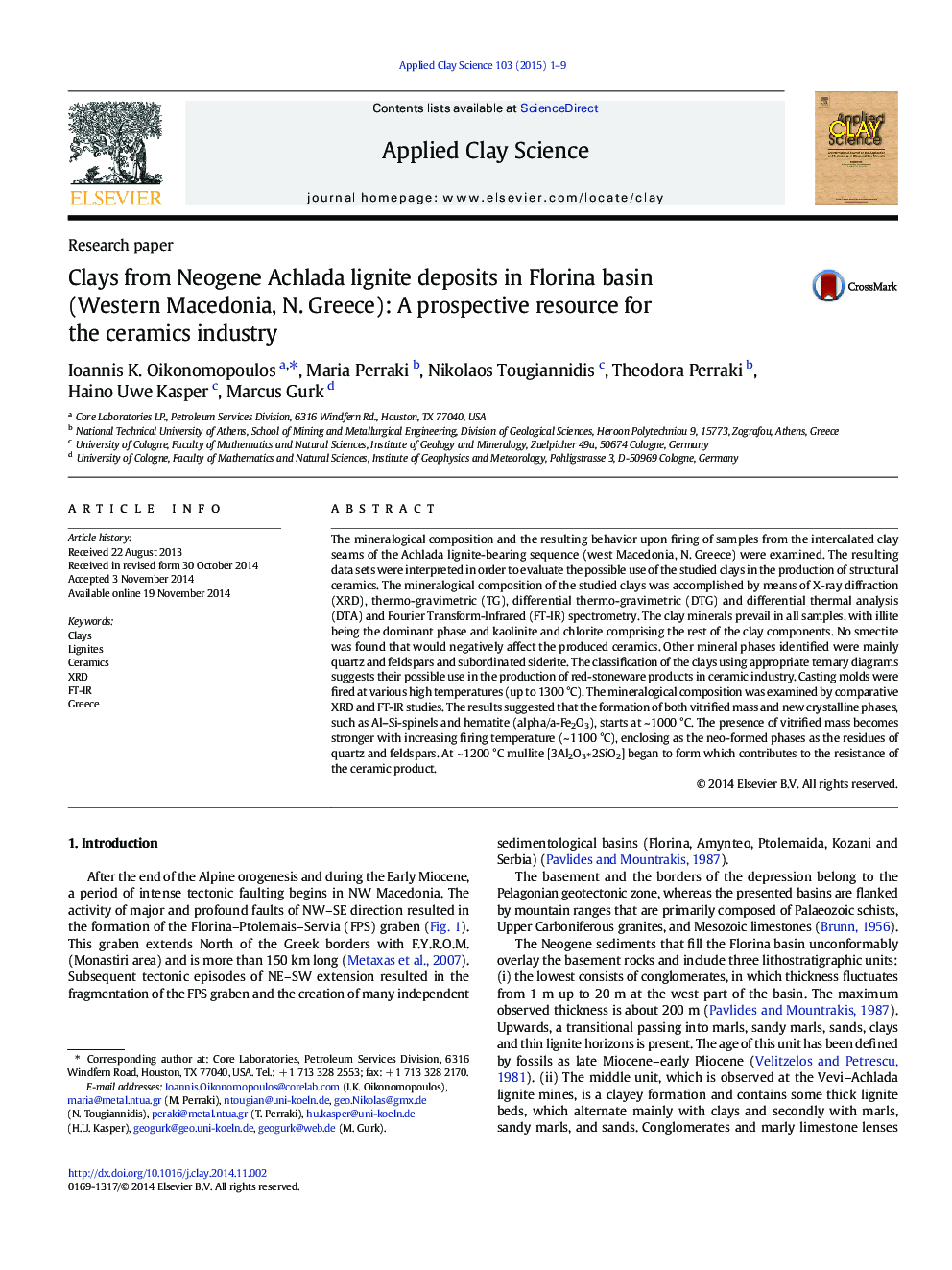| Article ID | Journal | Published Year | Pages | File Type |
|---|---|---|---|---|
| 1694507 | Applied Clay Science | 2015 | 9 Pages |
Abstract
The mineralogical composition and the resulting behavior upon firing of samples from the intercalated clay seams of the Achlada lignite-bearing sequence (west Macedonia, N. Greece) were examined. The resulting data sets were interpreted in order to evaluate the possible use of the studied clays in the production of structural ceramics. The mineralogical composition of the studied clays was accomplished by means of X-ray diffraction (XRD), thermo-gravimetric (TG), differential thermo-gravimetric (DTG) and differential thermal analysis (DTA) and Fourier Transform-Infrared (FT-IR) spectrometry. The clay minerals prevail in all samples, with illite being the dominant phase and kaolinite and chlorite comprising the rest of the clay components. No smectite was found that would negatively affect the produced ceramics. Other mineral phases identified were mainly quartz and feldspars and subordinated siderite. The classification of the clays using appropriate ternary diagrams suggests their possible use in the production of red-stoneware products in ceramic industry. Casting molds were fired at various high temperatures (up to 1300 °C). The mineralogical composition was examined by comparative XRD and FT-IR studies. The results suggested that the formation of both vitrified mass and new crystalline phases, such as Al-Si-spinels and hematite (alpha/a-Fe2O3), starts at ~ 1000 °C. The presence of vitrified mass becomes stronger with increasing firing temperature (~ 1100 °C), enclosing as the neo-formed phases as the residues of quartz and feldspars. At ~ 1200 °C mullite [3Al2O3â 2SiO2] began to form which contributes to the resistance of the ceramic product.
Related Topics
Physical Sciences and Engineering
Earth and Planetary Sciences
Geochemistry and Petrology
Authors
Ioannis K. Oikonomopoulos, Maria Perraki, Nikolaos Tougiannidis, Theodora Perraki, Haino Uwe Kasper, Marcus Gurk,
